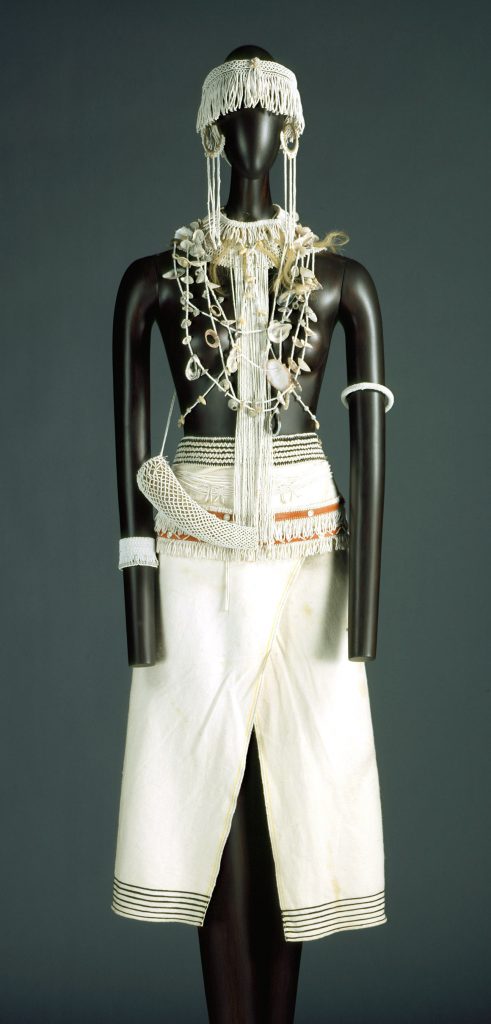Costume for a Diviner’s Acolyte (Ukuthwasa) (work of art)
Artwork Info
Key Ideas about this Work of Art
- This costume is made up of a white wrap skirt trimmed in black stripes, arm bands, a fringed, beaded belt, a fringed headpiece, hoop earrings, a collar tufted with blond hair, and various necklaces dotted with shells.
- Each aspect of the costume has ritual significance. For example, an iselwa lembambo (calabash gourd) is filled with powdered medicine, and the color of the beads (white) represents purity.
- The Xhosa people originated in the Eastern Cape of South Africa. They place importance on spirituality and rituals such as initiation, or the official process of joining a group. Their belief systems are often combined with Christianity, which was introduced by European settler colonists.
- Diviners, who connect the community with the ancestors, perform dances with acolytes (diviners in training). Dances occur three specific times of the year: at the beginning of the new year, at spring planting time, and fall harvest time. Additional dances occur as part of the five-year training for acolytes.
- This costume for an acolyte demonstrates that objects hold spiritual significance in African visual culture and shows how traditional practices are incorporated into modern life.
Learn More
This is an example of a costume for a diviner’s acolyte. Xhosa diviners communicate directly with ancestors and other spirits through trance, dream, divination, and sacred dance, and they interpret the causes of illness and other misfortunes. The diviners conduct ceremonies and rites of appeasement and are skilled in using herbal medicine. Three times each year—marking the new year, spring planting, and harvest time—diviners and acolytes perform dances to ensure success and good fortune. Dances are also held to mark the stages of training for acolytes, which last five years.
tags: ceremony, community, function, meaning, movement, power, ritual, seasons
Additional Resources
Resources for Teachers:
- Watch a short film that explores the relationship between dreams and divination.
- Read an article about beadwork in South Africa.
- Read an article about the Xhosa diaspora.
Resources for Students:
- Explore Xhosa traditions.
- Watch a video about a beadworker and her journey.

